Scott #285 is part of the 1898 Trans-Mississippi Exposition issue, a series of nine stamps issued by the United States Post Office Department to commemorate the Trans-Mississippi and International Exposition held in Omaha, Nebraska. This series was issued to highlight the economic and cultural significance of the western territories of the United States.
The one-cent stamp, Scott #285, features an engraving of Father Jacques Marquette, a French Jesuit missionary and explorer, navigating the Mississippi River in 1673.
The series was originally intended to be printed in two colors, but due to the outbreak of the Spanish-American War, the Bureau of Engraving and Printing opted to use a single-color design for each stamp to expedite production.
Design & Print
Scott #285 was designed and printed by the Bureau of Engraving and Printing (BEP), which had taken over stamp production from private companies in 1894. The stamp was issued on June 17, 1898, along with the rest of the Trans-Mississippi series. The total quantity produced was approximately 70,993,400.
The central design is an adaptation of an existing engraving depicting Marquette and his companions in a canoe on the Mississippi River. The denomination “1” appears in all four corners, with “United States of America” and “Postage One Cent” inscribed at the top and bottom, respectively. The left and right side panels contain elaborate scrollwork framing the central vignette. The stamp is perforated 12 and printed on unwatermarked paper.
Postal Usage
The one-cent denomination corresponded to the domestic postcard rate in 1898, making Scott #285 widely used for mailing postcards across the United States. It was also used in combination with other stamps to meet higher postage rates for letters, parcels, and international mail.
At the time of its issuance, the postal rate for a first-class domestic letter was two cents per ounce, meaning this stamp alone was insufficient for mailing standard letters without an additional one-cent stamp. The postal system was undergoing changes during this period, with the Universal Postal Union standardizing international rates, making Scott #285 a common component of international postage combinations.
The Spanish-American War also led to an increase in mail volume due to military correspondence, but there was no direct change in postage rates that affected the primary use of this stamp.
Identification
Scott #285 can be identified by its dark yellow green color, intricate engraving, and perforation 12 gauge. The key elements that set it apart from similar stamps include the engraved depiction of Marquette on the Mississippi, the ornate scrollwork surrounding the vignette, and the font used for the denomination and country name.
Unlike the two-color design originally intended for the Trans-Mississippi series, Scott #285 was printed in a single ink color due to time constraints. The stamp has a USPS double line watermark, identified as watermark 191 in Scott.
It’s design was reissued in 1998 commemorating the 100 year anniversary of the Trans-Mississippi stamp set. The 1998 issue can be distinguished by it’s bi-color printing where the vignette is black, versus the 1898 issue was printed in one color.

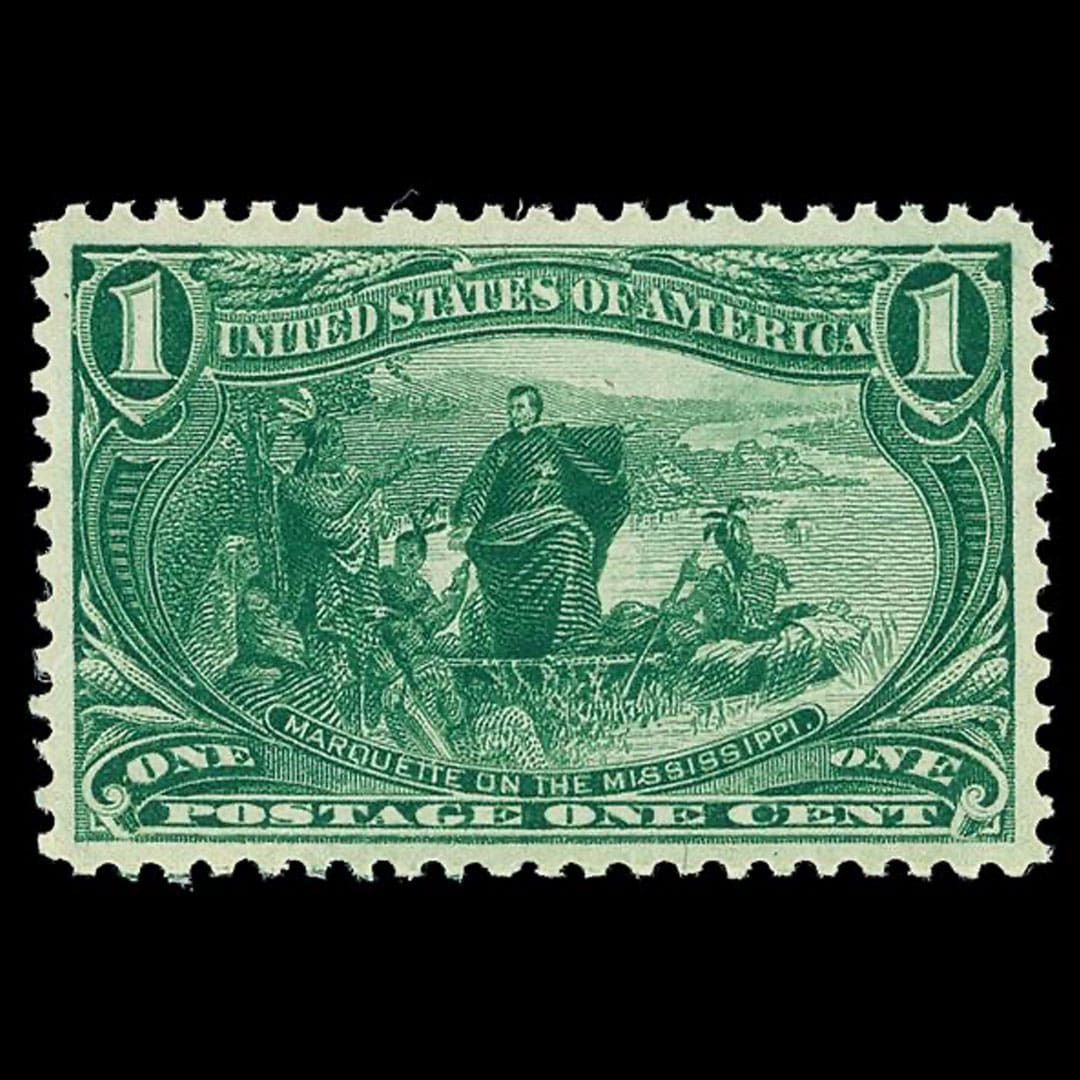

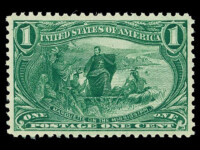
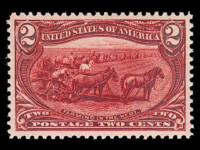

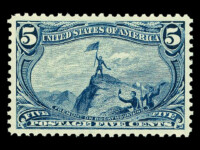

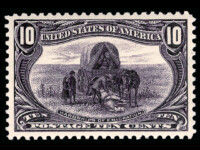
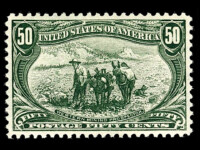
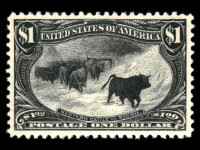
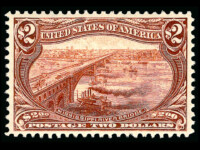









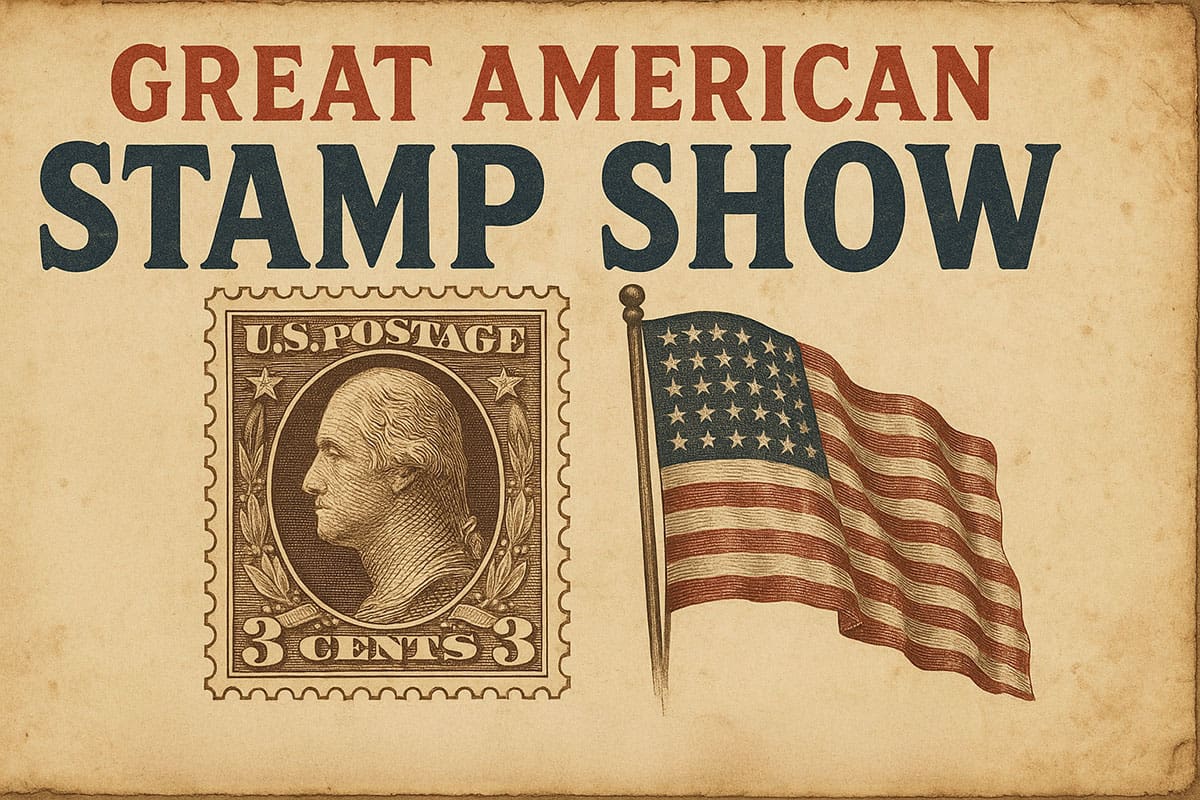

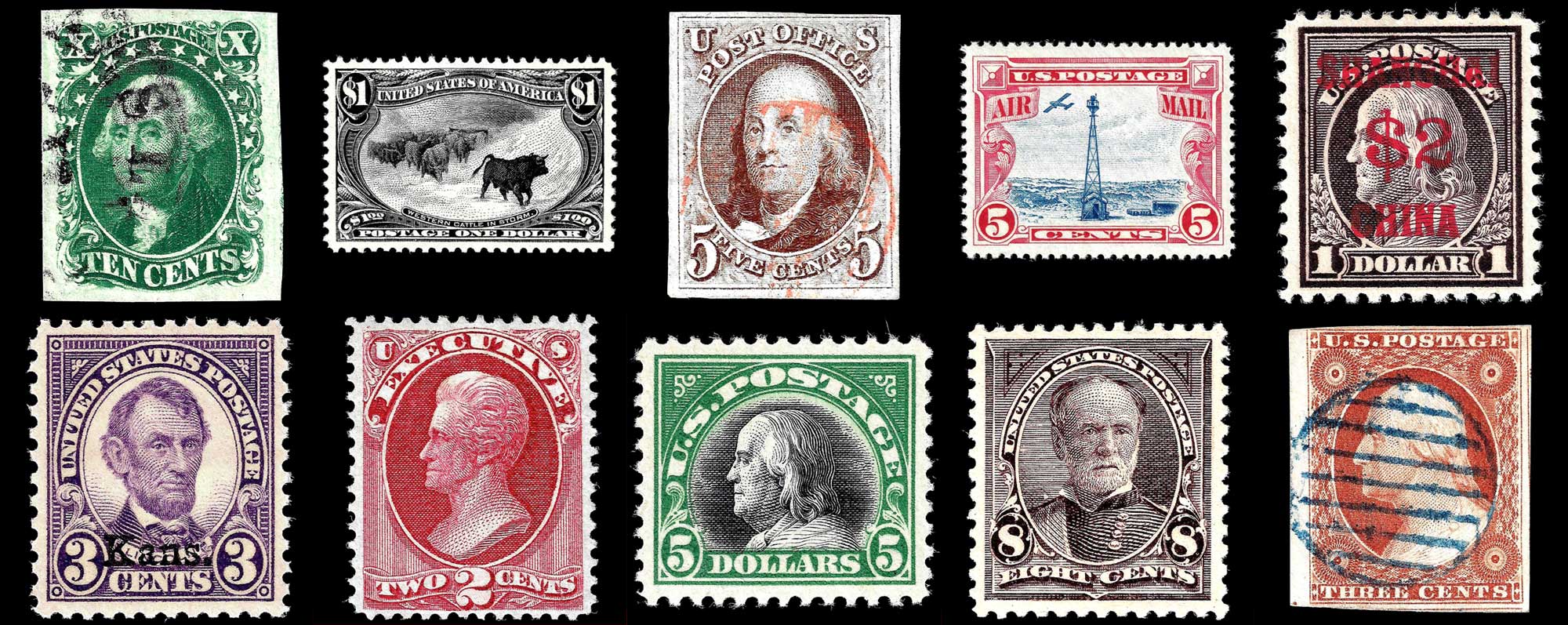
Ask A Question Or Leave A Comment